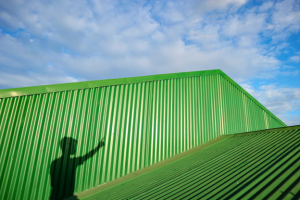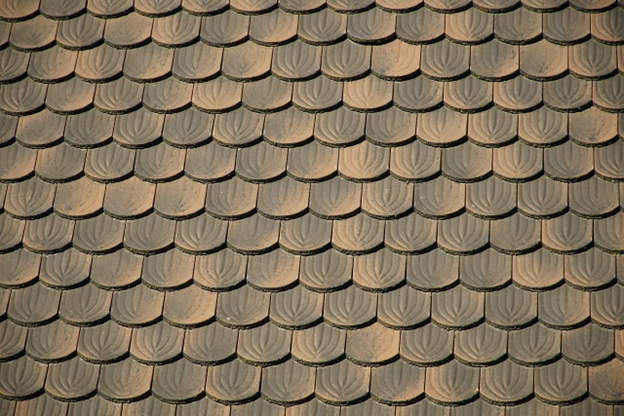The roof is one of the most important—yet frequently disregarded—aspects of home maintenance. The roof not only shelters the house from the elements but also contributes significantly to its aesthetic appeal and energy efficiency. In this blog, we will explore the various types of roofs commonly used in residential buildings, along with practical tips on how to repair them effectively. Whether you are dealing with a minor leak or a significant structural issue, understanding the nuances of different roof types can help you make informed decisions for maintaining your home.
Metal Roofs

Metal roofs are renowned for being long-lasting, resilient, and energy-efficient. Typically made from materials like steel, aluminum, or copper, these roofs can withstand extreme weather conditions, including heavy rain, snow, and high winds. They are also resistant to fire, mildew, insects, and rot, which makes them an excellent choice for homes in various climates. Hiring metal roofing repair experts is crucial for fixing any issues with these roofs as they require specialized tools and techniques. However, you can also try DIY repairs if the damage is minor, such as patching small holes or replacing a few damaged shingles.
Asphalt Shingle Roofs
Asphalt shingle roofs are one of the most popular choices for residential homes due to their affordability, ease of installation, and versatility in design. These roofs are made from a combination of asphalt and fiberglass, providing a variety of colors and textures to complement any home style. Although they don’t last as long as metal roofs, with a typical lifespan of 20 to 30 years, they offer sufficient protection against the elements.
For routine maintenance and minor repairs, it’s often feasible to replace damaged shingles yourself with basic tools. However, for more extensive damage, such as widespread shingle deterioration or underlying structural issues, consulting a roofing professional is highly recommended. Regular inspections and timely repairs can significantly extend the life of an asphalt shingle roof, ensuring your home remains safe and visually appealing.
Tile Roofs
Tile roofs are admired for their classic appearance and exceptional durability. Commonly made from clay or concrete, tile roofs are particularly favored in regions with hot climates due to their excellent heat resistance. These roofs can last up to 100 years with proper maintenance, making them an enduring and reliable choice for homeowners. One of the key benefits of tile roofs is their ability to withstand harsh weather conditions, including high winds and heavy rainfall. Additionally, they are fireproof and resistant to rot and insect damage.
However, the weight of the tiles requires a strong and properly reinforced roof structure. For minor repairs, such as replacing individual cracked or broken tiles, a diligent DIY approach with appropriate safety measures can suffice. Use caution to prevent further damage and ensure tiles are securely fastened to avoid leaks. For more substantial issues, especially those involving the underlying roof structure, it is advisable to seek professional assistance.
Slate Roofs
Slate roofs are renowned for their timeless elegance, natural beauty, and extraordinary durability. Made from natural stone, these roofs can last well over a century when properly maintained, making them one of the longest-lasting roofing options available. Slate is highly resistant to fire, rot, and insect damage, which adds to its desirability. Additionally, it provides excellent protection against harsh weather conditions, including high winds and heavy snow.
Despite its many benefits, slate roofing can be quite heavy, requiring a solid and well-engineered roof structure to support its weight. This makes it crucial to ensure that your home’s frame can accommodate the added load before installation. When it comes to maintenance and repairs, the specialized nature of slate roofs means that professional skill is often required, especially for significant issues.
However, minor repairs, like replacing a few damaged or missing slate tiles, can be managed by homeowners with the right tools and careful attention to detail. Always handle slate tiles with caution to avoid cracking or breaking them, and secure them properly to prevent leaks. Regular inspections and timely repairs can help preserve the integrity and beauty of a slate roof for generations.
Wooden Shake Roofs
Wooden shake roofs offer a rustic and natural charm that enhances the aesthetic appeal of many homes. Typically made from cedar, redwood, or other durable woods, these roofs are known for their unique, textured look and can last anywhere from 20 to 40 years with proper care. Wooden shakes provide excellent insulation, helping to maintain a more consistent indoor temperature throughout the year.
However, wooden shake roofs require regular maintenance to prevent common issues such as moss, mold, and insect infestations. To preserve their longevity, it’s essential to conduct routine inspections and cleanings. This often involves removing debris, treating for pests, and applying water-repellent preservatives to protect against moisture damage.
For minor repairs, such as replacing individual shakes that have cracked or become dislodged, a DIY approach can be quite effective. Ensure that replacement shakes are of the same type and quality to maintain uniformity and performance. Use appropriate tools and safety measures to avoid damaging surrounding shakes. For more extensive repairs or structural issues, professional expertise is recommended to ensure the roof remains secure and functional.
Understanding the various types of roofs and their unique characteristics is essential for efficient and effective maintenance and repair. Whether you have a metal, asphalt shingle, tile, slate, or wooden shake roof, regular inspections, and timely repairs are crucial to keeping your home safe, beautiful, and energy-efficient. When in doubt about the severity of an issue or the best course of action for repairs, consulting a professional roofing contractor can provide valuable insights and ensure long-term success. With proper care and attention, your roof can continue to protect your home for years to come.

Recent Comments